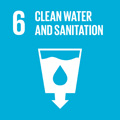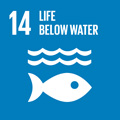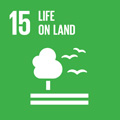- Docente: Silvia Bordoni
- Credits: 4
- SSD: CHIM/03
- Language: Italian
- Teaching Mode: Traditional lectures
- Campus: Bologna
- Corso: Second cycle degree programme (LM) in Industrial Chemistry (cod. 0884)
-
from Sep 17, 2024 to Dec 05, 2024
Learning outcomes
The Course is aimed at presenting fundamental knowledge on the role of metals in biological systems. In particular, the students will gain insights on: the role of transition metals in electron transfer, oxygen transport; metal enzymes; chemistry of essential elements in biological systems as iron, zinc, copper, cobalt; hints about Mn or Cr; metals in medicine; therapeutical antineoplastic metals: the cases of Pt and Ru.
Course contents
The Course is aimed at presenting fundamental knowledge on the role of metals in biological systems. In particular, the students will gain insights on: the role of group I and II metals, the role of transition metals in electron transfer, photosynthesis and oxygen transport; metal enzymes; biochemistry of iron; nitrogen fixation; essential elements in biological systems; metals in medicine
Course contents
Prerequisites
Prerequisites required for this course are:
a) General and inorganic chemistry; Fundamental of organic chemistry and biochemistry
b) Inorganic chemistry: trend of atomic properties, chemical bond, main element features, coordination chemistry and crystal field theory of Transition Metals;
c) Hints on spectroscopic techniques for molecular characterization;
d) Principles of Thermodynamics and Kynetics ;
Contents
Fundamental concepts in coordination chemistry: molecular geometry and isomerism. Introduction to bioinorganic chemistry and the role of metals in biological systems.
1) Bioinorganic chemistry: definition and basic principles;
2) Classification of essential elements; Main metals of biological interest and their roles;
4) Metalloproteins: structures and functions;
5) Biological role of alcali and earth metals: ionophores, ion channels, Na/K-ATPase; Calcium and magnesium: biominerals, chlorophyll, regulatory role of Ca, enzymes;
7) Biological role of Zn: properties, Zn-enzymes, structural role, Zn-fingers;
8) Biological ubiquitary role of Fe: classification of Fe-proteins; transferrin and ferritine; hemoglobin and myoglobin; cytochromes and electron transfer; cytochrome P450; Fe-S proteins; Diffusion and saturation principles.
9) Biological role of Cu: main Cu-proteins and their role; blu copper proteins; Cu-Zn-SOD; cytochrome c oxidases and respiratory chain;
10) Introduction of the biological role of Mn: Mn-proteins, properties and functions; Mo and nitrogen fixation; Biological role of Co: B12 vitamin; introduction to the biological role of Ni;
11) Metals in medicine as showing anticancer antibacterial or anti fungal funtions.
The treated topics are strictly connected to the sustainable targets of ONU concerning 3, 6 14 and 15 objectives.
Readings/Bibliography
The class lessons are imprted on bibliographic illustrated material informatically disposable by the teacher mainly in english. Nevertheless some books, that you can find in the library, are suggested to favor the plain comprehension of the treated biological aspects
J. E. Huheey, A. E. Keiter, R. L. Keiter “Chimica Inorganica” Casa Editrice Piccin Padova.
D. F. Shriver, P.W.Atkins, C.H.Langford, 'Chimica Inorganica '; Zanichelli.
R. M. Roat Malone “Bioinorganic Chemistry” Wiley.
I. Bertini, H. B. Gray, E. I. Stiefel, J. S. Valentine, “Biological Inorganic Chemistry, University Science Books.
W. Kaim, B. Schwedereski, A. Klein, "Bioinorganic chemistry: inorganic elements in the chemistry of life", Wiley.
Teaching methods
The course includes class lectures and tutorial activities. Lectures are supported by slide projection web-video and e-texts . Class discussion is encouraged.
Assessment methods
Students are asked to take an oral examination in one of the scheduled sessions at the end of the course. The exam is based on the topics treated in the class aimed at checking the understanding of the student and the capacity to apply the concepts of inorganic chemistry to biochemsitry.
The oral examination consists into two consecutive ppt presentations one subject discussed during the courseslides max. 12 slides) and underlying the fundamental aspects of each topic and another subject by selecting a free-choice paper of recent pubblication describing it in a very concise way (12 slides ), pointing the essential of results, discussion and conclusions.
Teaching tools
Teaching supports include PowerPoint presentations, web-pesentations and slide projection. Documents and slides shown are made available to students through web-istitutional platform.
Links to further information
https://www.youtube.com/watch?v=RKmaq7jPnYM
Office hours
See the website of Silvia Bordoni
SDGs




This teaching activity contributes to the achievement of the Sustainable Development Goals of the UN 2030 Agenda.
